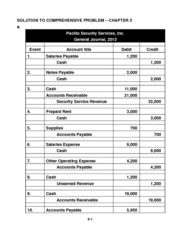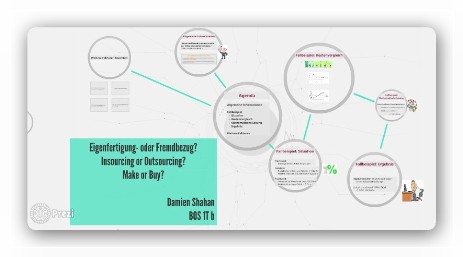Content

International Accounting Standards were a set of rules for financial reporting that were replaced in 2001 by International Financial Reporting Standards . In this scenario, we can see that the materiality of the extraordinary loss item is only 0.13% of the net income of the company, which is way below the rule of thumb of 5%. The accountant must take the combined effect of all the individual items as well. It might be possible that individually each item contributed less than 0.25% of net income, but when combined the impact of ten such items is around 2.5% or more. There are also external implications for your materiality analysis, with the results informing the preparation of annual corporate reporting, ensuring the internal and external needs are met. To validate the material issues identified, stakeholder interests and expectations should be taken into account.
Why is the materiality concept important?
The materiality concept is important because it allows companies to disclose only those events or items that are significant to their financial health. This helps to avoid the clutter of insignificant information and allows investors to focus on the most important details.
This is because the materiality principle notes that investors, creditors, and other interested parties will not be misled by the immediate expensing of the £20 table. The materiality principle in turn says that you may expense the whole £20 the year that the table is purchased however – so you do not have to depreciate the table by £2 over each of the next ten years.
How do you apply the materiality concept of assets?
According to the materiality concept, this loss of $30,000 is immaterial for company A because the average financial statement user would not be concerned with something that is only 0.08% of the total net income. The information, size, and nature of transactions are considered material if the omission or error of it could potentially lead to the decision of users of financial information. Under GAAP in the U.S., assets are recorded and reported on the balance Materiality Principle in Accounting: Definition sheet at their original cost. Historical cost is objective because an auditor, or anyone for that matter, could observe the receipt for the asset and come up with the same cost, which is, in fact, one of the tests that auditors perform on major assets. This was disclosed, as required by GAAP, in the footnotes to the audited financial statements. Accounting principles are rules and guidelines that companies must abide by when reporting financial data.
- This purchase of machinery of $50,000 is a significant item as the purchase amount is 25% of the total revenue amount.
- Although the amount may be insignificant and might not be more than a couple of hundred dollars, that it was stolen will make it a material event to disclose on the financial reports.
- We also allow you to split your payment across 2 separate credit card transactions or send a payment link email to another person on your behalf.
- The materiality criterion is sometimes expressed as a broad percentage on a financial statement.
- In terms of ISA 320, paragraph A1, a relationship exists between audit risk and materiality.
When accounting principles allow a choice among multiple methods, a company should apply the same accounting method over time or disclose its change in accounting method in the footnotes to the financial statements. The concept of materiality works as a filter through which management sifts information. Its purpose is to make sure that the financial information that could influence investors’ decisions is included in the financial statements.
Example: Materiality by size
This rule contains a requirement that the engaging party acknowledge the procedures are appropriate for the intended engagement purpose before a report is issued. It will also allow general-use reporting and eliminate the requirement that agreed-upon procedures reports be used only by parties that accepted responsibility for the procedures sufficiency. The ASB asserts that it is necessary to give accountants flexibility when examining or reviewing certain documents, particularly when clients can’t appropriately measure or evaluate them. The subject matter’s responsible party, in some cases, may not be readily identifiable. It reduces the need of recording every business transaction since only the material ones require full disclosures.
The Securities and Exchange Commission has suggested for presentation purposes that an item representing at least 5% of total assets should be separately disclosed in the balance sheet. For example, if a minor item would have changed a net profit to a net loss, that item could be considered material, no matter how small it might be. Similarly, a transaction would be considered material if its inclusion in the financial statements would change a ratio sufficiently to bring an entity out of compliance with its lender covenants. For example, if a minor item would have changed a net profit to a net loss, then it could be considered material, no matter how small it might be. The materiality concept of accounting stats that all material items must be properly reported in financial statements. An item is considered material if its inclusion or omission significantly impacts the decision of the users of financial statements. The items that have very little or no impact on a user’s decision are termed as immaterial or insignificant items.
How to Apply the Materiality Concept in 5 Steps
The company must determine whether this gain is material, or significant enough, to be disclosed in its financial statements. On the other hand, if the gain is material, it must be disclosed in the financial statements and may require additional disclosures or explanations. Requires disclosure of line items in the financial statements based on materiality. The accounting information must be free from error within the bounds of materiality. A material error or an omission can cause the financial statements to be false or misleading.
The Integrated Word-Excel-PowerPoint system guides you surely and quickly to professional quality results with a competitive edge. Rely on BC Templates 2021 and win approvals, funding, and top-level support. Metrics are crucial for business planning, making informed decisions, defining strategic targets, and measuring performance. Record transactions at the prevailing price at the time of acquisition. Everyone must know what each adds to partnership production, marketing, selling, and general management. And, they must plan together how to eliminate redundancies and overly costly operations. And, each must know the risks and liabilities that the others bring to the partnership.
Examples of Materiality Concept in Accounting
Materiality ensures you focus on what matters, are time efficient and cut costs, all of which are especially vital during challenging economic times. There are hundreds of ESG issues, but materiality helps you define what ESG means for you. In addition, the Practice Statement includes specific guidance on how to make materiality judgements on prior period information, errors, and covenants, and in the context of interim reporting.
Opinion: Farmers need to build bridges with corporate world – FarmersWeekly
Opinion: Farmers need to build bridges with corporate world.
Posted: Tue, 31 Jan 2023 00:51:37 GMT [source]
In addition, for a comprehensive and thorough understanding of the organization’s operations and priorities, a dedicated inter-departmental governance body should be established. They are responsible for coordinating and implementing the materiality assessment process. A governance structure and processes should be established to build, validate and sign off the findings from the materiality assessment.
What Is the Principle of Materiality in Accounting?
Accounting principles are the rules and guidelines that companies and other bodies must follow when reporting financial data. These rules make it easier to examine financial data by standardizing the terms and methods that accountants https://online-accounting.net/ must use. The materiality principle can ignore other important principles such as the full disclosure concept and the conservatism principle. It can also be abused by companies who may want to conceal unfavorable information.


